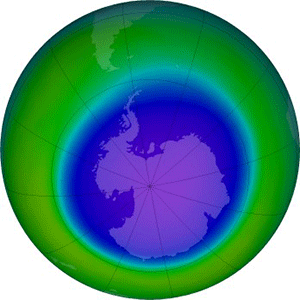Ozone hole – one of the largest ever
30th October 2015 SWITZERLAND: Despite the phase-out of ozone-depleting refrigerants, the Antarctic ozone hole is currently among the largest ever observed.
SWITZERLAND: Despite the phase-out of ozone-depleting refrigerants, the Antarctic ozone hole is currently among the largest ever observed.
According to the World Meteorological Organisation (WMO), the ozone hole reached its maximum extent this year with an area of 28.2m km² on October 2. However, the WMO stresses that this is due to colder than usual stratospheric meteorological conditions. Temperature conditions in the Antarctic stratosphere vary from year to year, it says, and does not indicate a reversal of the projected long-term recovery.
Data from NASA, averaged over the 30 consecutive days, the ozone hole is 26.9m km2 – the third largest observed after the record-breaking ozone holes of 2000 and 2006.
“This shows us that the ozone hole problem is still with us and we need to remain vigilant. But there is no reason for undue alarm,” said Geir Braathen, a senior scientist in WMO’s Atmospheric and Environment Research Division.
“As a result of the broad compliance with the [Montreal] Protocol and industry’s development of “ozone-friendly” substitutes for the now-controlled chemicals, the total global accumulation of Ozone Depleting Substances (ODSs) has slowed and begun to decrease,” he said. Substantial recovery of the ozone layer is expected by the middle of the 21st century, although over the Antarctic it will be later – probably around 2070,” he added.







